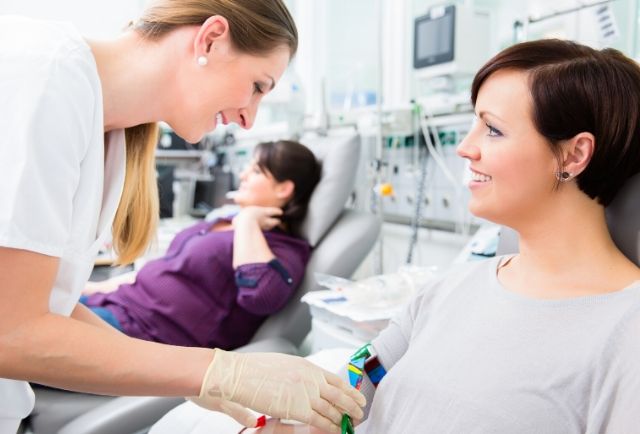Get This Report on Northeast Medical Institute - New Haven Campus Phlebotomy Course & Cna Class
Get This Report on Northeast Medical Institute - New Haven Campus Phlebotomy Course & Cna Class
Blog Article
The Single Strategy To Use For Northeast Medical Institute - New Haven Campus Phlebotomy Course & Cna Class
Table of ContentsThe 30-Second Trick For Northeast Medical Institute - New Haven Campus Phlebotomy Course & Cna ClassNortheast Medical Institute - New Haven Campus Phlebotomy Course & Cna Class Fundamentals ExplainedThe Only Guide to Northeast Medical Institute - New Haven Campus Phlebotomy Course & Cna ClassThe 10-Minute Rule for Northeast Medical Institute - New Haven Campus Phlebotomy Course & Cna ClassExcitement About Northeast Medical Institute - New Haven Campus Phlebotomy Course & Cna ClassThe 20-Second Trick For Northeast Medical Institute - New Haven Campus Phlebotomy Course & Cna Class
The usage of such gadgets should be come with by other infection prevention and control practices, and training in their use.For setups with reduced resources, expense is a motoring element in purchase of safety-engineered tools. Where safety-engineered devices are not offered, competent usage of a needle and syringe is acceptable.
labelling); transport conditions; analysis of results for clinical monitoring. In an outpatient division or clinic, supply a devoted phlebotomy work area containing: a tidy surface with two chairs (one for the phlebotomist and the other for the patient); a hand wash container with soap, running water and paper towels; alcohol hand rub. In the blood-sampling space for an outpatient division or center, offer a comfortable reclining couch with an arm remainder.
The Basic Principles Of Northeast Medical Institute - New Haven Campus Phlebotomy Course & Cna Class
Make sure that the indicators for blood tasting are plainly defined, either in a composed protocol or in documented guidelines (e.g. in a laboratory kind). Whatsoever times, adhere to the methods for infection prevention and control listed in Table 2.2. Infection avoidance and control techniques. Collect all the tools required for the procedure and area it within risk-free and simple reach on a tray or cart, guaranteeing that all the items are plainly noticeable.
Where the person is grown-up and aware, follow the steps detailed listed below. Present yourself to the patient, and ask the individual to state their full name. Inspect that the lab type matches the person's identification (i.e. match the patient's information with the laboratory form, to guarantee precise recognition). Ask whether the patent has allergic reactions, anxieties or has actually ever fainted throughout previous injections or blood draws.
Make the person comfy in a supine placement (when possible). Area a tidy paper or towel under the individual's arm. Review the examination to be done (see Annex F) and acquire spoken approval. The person has a right to refuse a test any time prior to the blood tasting, so it is vital to make sure that the patient has actually comprehended the procedure.
Northeast Medical Institute - New Haven Campus Phlebotomy Course & Cna Class Fundamentals Explained
Expand the patient's arm and check the antecubital fossa or lower arm. Locate a capillary of an excellent size that is visible, straight and clear. The layout in Section 2.3, reveals common positions of the vessels, however several variations are possible. The mean cubital vein lies in between muscular tissues and is typically one of the most easy to puncture.
DO NOT insert the needle where veins are diverting, because this enhances the possibility of a haematoma. The capillary must show up without applying the tourniquet. Finding the capillary will certainly help in identifying the appropriate dimension of needle. Apply the tourniquet regarding 45 finger widths above the venepuncture site and re-examine the vein.
Samplings from central lines bring a risk of contamination or incorrect laboratory examination results. It is acceptable, yet not optimal, to draw blood samplings when first presenting an in-dwelling venous device, before attaching the cannula to the intravenous fluids.
The 6-Second Trick For Northeast Medical Institute - New Haven Campus Phlebotomy Course & Cna Class
Allow the area to dry. Failure to enable sufficient get in touch with time raises the threat of contamination. DO NOT touch the cleaned site; in particular, DO NOT put a finger over the capillary to assist the shaft of the revealed needle. It the website is touched, repeat the sanitation. Execute venepuncture as adheres to.
Ask the client to develop a clenched fist so the capillaries are a lot more popular. Get in the blood vessel promptly at a 30 level angle or less, and remain to present the needle along the capillary at the easiest angle of access - CNA Training. Once enough blood has actually been gathered, release the tourniquet prior to taking out the needle
How Northeast Medical Institute - New Haven Campus Phlebotomy Course & Cna Class can Save You Time, Stress, and Money.
Take out the needle gently and use mild pressure to the website with a clean gauze or dry cotton-wool sphere. Ask the client to hold the gauze or cotton woollen in position, with the arm extended and increased. Ask the client NOT to bend the arm, due to the fact that doing so triggers a haematoma.
About Northeast Medical Institute - New Haven Campus Phlebotomy Course & Cna Class
Where possible, maintain the tubes in a shelf additional resources and move the rack towards you - https://hub.docker.com/u/northeastmed. If the example tube does not have a rubber stopper, infuse incredibly slowly right into the tube as reducing the pressure and rate made use of to transfer the sampling minimizes the risk of haemolysis.

Report this page